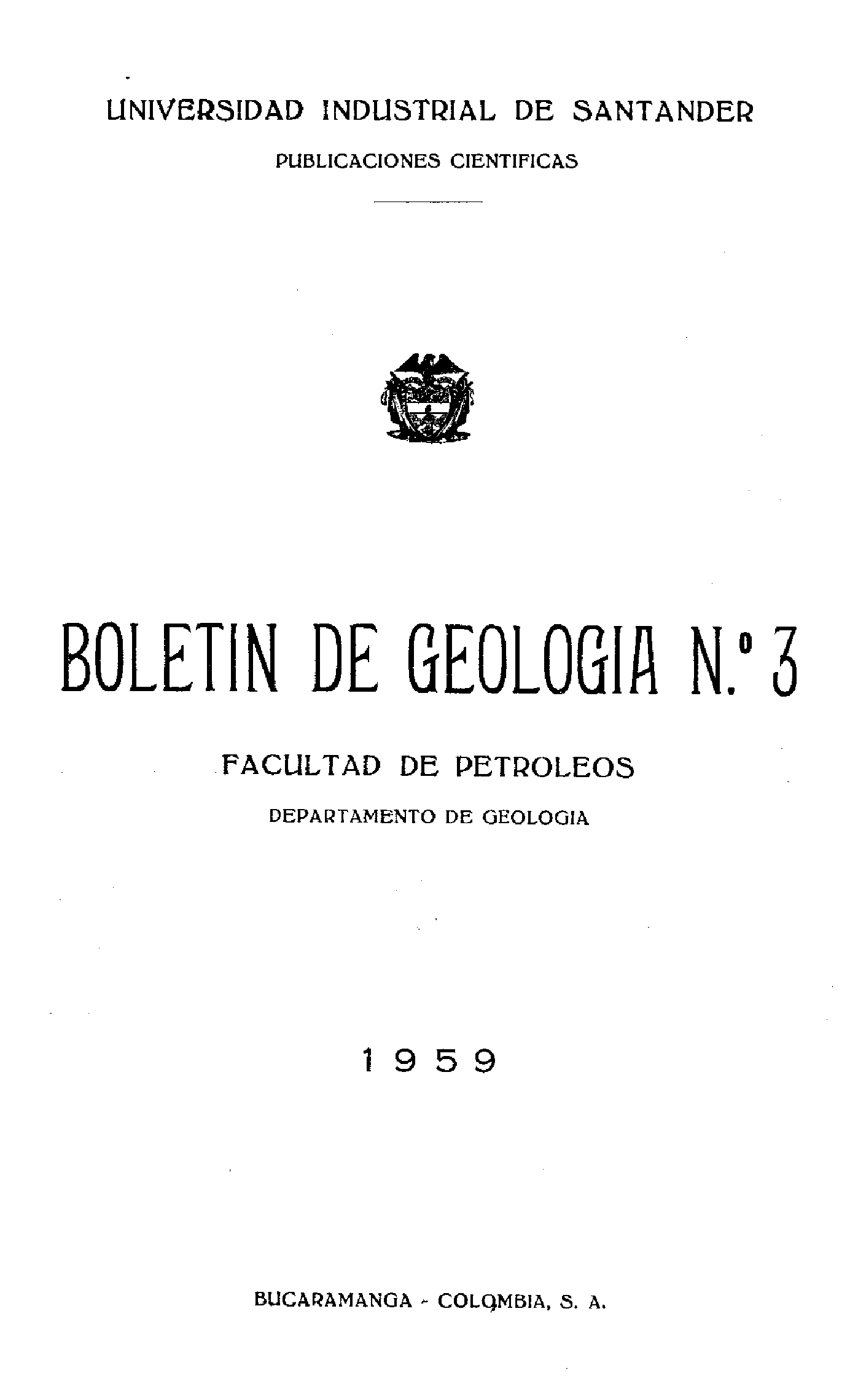Publicado 1959-04-08
Cómo citar
Resumen
RESUMEN
La terraza de Bucaramanga se ha depositado sobre una doveia que se ha hundido progresivamente, lo que explica el enorme espesor de los sedimentos y la discordancia progresiva que se observa en la carrtera de Girón a Lebrija. La estratigrafía comprende tres niveles. El inferior, que es el más potente, consta de conglomerados con intercalaciones de arenas. Sigue un nivel de materiales finos que se extiende por toda la terraza y finalmente un nivel superior formando por elementos más groseros. La serie termina con unos aportes laterales que fosilizan los accidentes tectónicos que limitan la dovela. El trazado del Rio de Oro y del Suratá viene determinando por una falla que les obliga a cambiar bruscamente el curso.
ABSTRACT
The Bucaramanga terrace has been deposited on a block that has sunk progressively. This explains the enormous thickness of the sediments and the progressive unconformity observed along the highway between Giron and Lebrija. The stratigraphy includes three levels. The lowest which is the thickest, is composed of conglomerates interbedded with sand. There follows a level consisting of fine materials which extends all over the terrace, and finally an upper level consisting of coarser materials. The series ends with some lateral contributions or aditions which fossilze the tectonic features which delimit the terrace. The course of the Río de Oro and of the Suratá is determined by a fault which obliges them to change their course abruptly.
